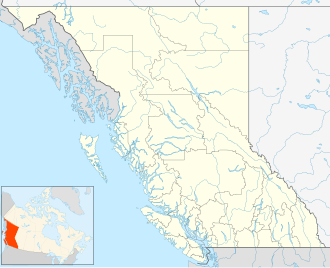| Big Bar Lake Provincial Park | |
|---|---|
 Otter Marsh in Big Bar Lake Provincial Park | |
 | |
| Location | Thompson-Nicola, British Columbia, Canada |
| Nearest town | Clinton |
| Coordinates | 51°18′39″N121°48′51″W / 51.31083°N 121.81417°W |
| Area | 368 ha (910 acres) |
| Established | October 27, 1969 |
| Administrator | BC Parks |
Big Bar Lake Provincial Park is a provincial park in British Columbia, Canada. It includes vehicle accessible camping, a boat launch, swimming, angling, and hiking opportunities. There are 46 campsites within the park in two very close campgrounds. [2]
